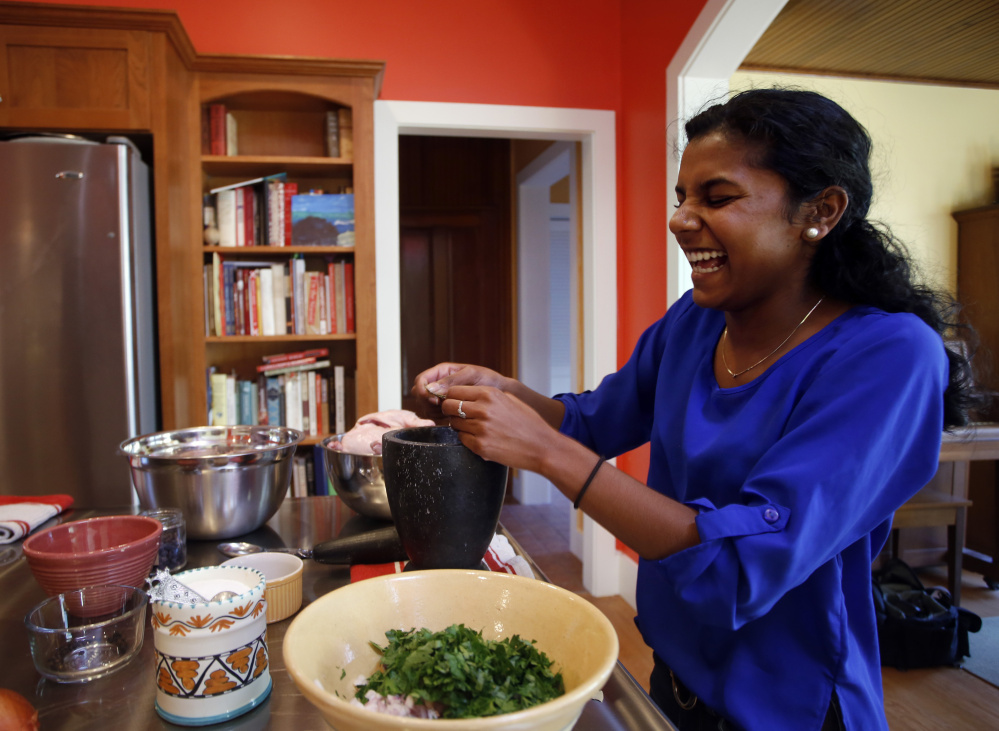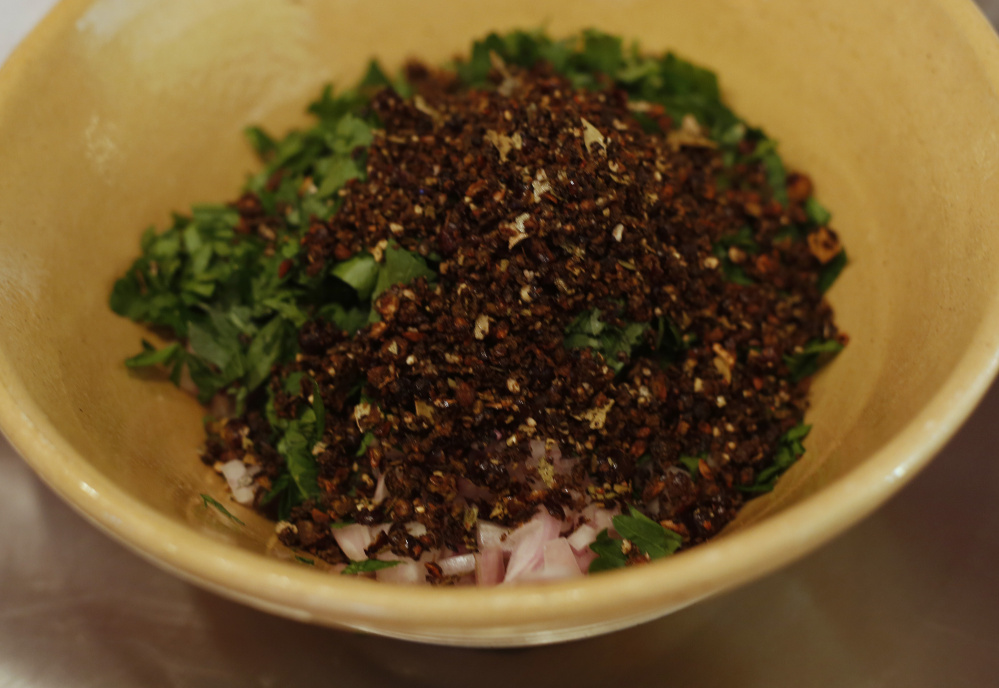To optimize the amount of fat you have, choose a heavy-bottomed vessel that is taller than it is wide. Do the same with the crock. My favorite crock is 8 inches in diameter and 11 inches tall and holds about 16 leg/thigh pieces. The crock doesn’t need a top.
• One-gallon Ball jars work, but crocks are better with their wider opening.
• Pick 4 to 6 large pebbles (about 1 inch in size) and put them through the dishwasher in the utensils rack. Then, when you are ready to pack the confit, put them on the bottom of your container so the duck pieces rest on top and won’t be bathed in the brine mixture that will collect below.
• The duck pieces shrink as they cook, so don’t be afraid of buying big ones, at least 10 ounces.
• Leave about an hour to bringing the fat up to temperature and another hour for it cool. Don’t rush either, particularly the first by blasting the heat or you’ll get stringy meat.
• You should have enough fat to cover the pieces entirely. If not, work in batches, sealing finished pieces in a shallow bowl covered tightly with foil to prevent drying.
• Buy rendered pork leaf lard (at Bisson’s, Pat’s, Rosemont) or butcher’s lard to cover the finished cooled confit. Off-the-shelf commercial lard is gross.
• Let your confit sit for at least a week. Remove it from the refrigerator the night before you want to use it and put it in a cool place. Be careful when extricating the duck pieces – they break easily. Seal any unused portion with remelted lard and return the crock to the refrigerator.
• Strain the fat well, discarding the brine, and then freeze it for reuse. That garlic head, paper discarded, is pure gold when cooking sliced potatoes.
• When removing the finished duck from the oven, be careful of the substantial amount of hot fat in the pan under the rack. Although you can cook with it, it is not reusable for confit, having likely reached too high a temperature.
• Make duck cracklings with the pieces of excess fat you removed from the duck and serve them, salted, in a salad with bitter greens.
• Don’t try to confit wild duck, particularly lean waterfowl, which have a fishy diet, and using whole ducks presents more problems, as different pieces cook at different rates.
— MICHAEL SANDERS
Send questions/comments to the editors.




Comments are no longer available on this story